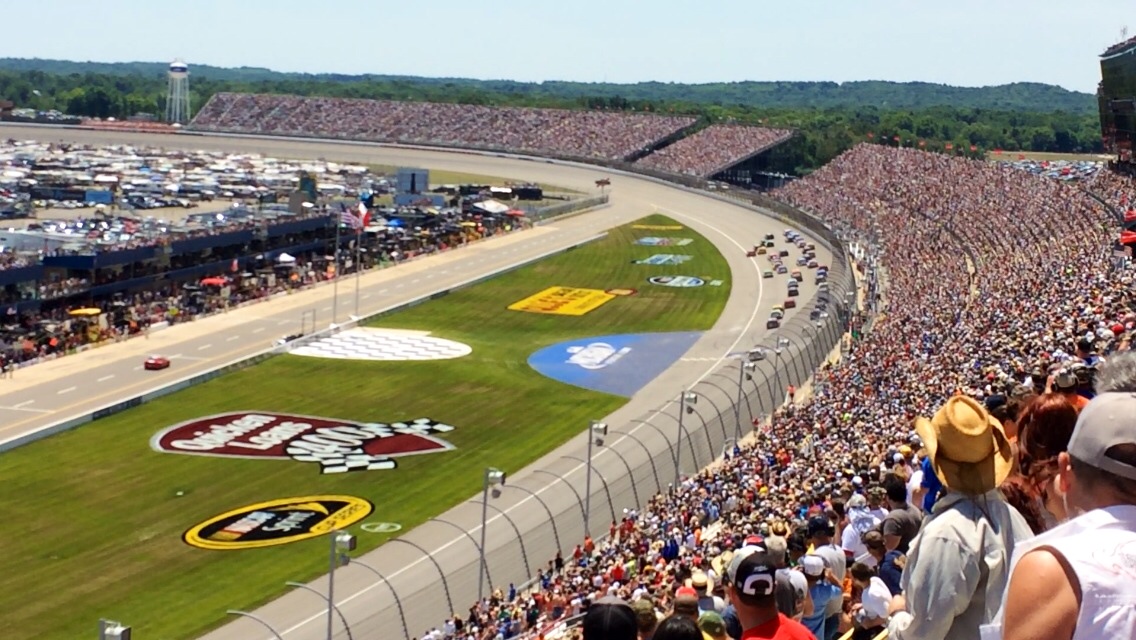
On Nov. 17, four drivers will contend to hoist the trophy and claim the title of NASCAR champion. As the field of cars thunders across the finish line of the Ford EcoBoost 400 at Homestead-Miami Speedway, it will bring an end to a season that has, in many ways, brought about a rebirth of the sport, and cultivated an excitement over what is next as it moves into the future.
In a newfound era of optimism for the sport, Hillsdale College should take advantage of sponsoring a NASCAR team. The college has the marketing budget to make the investment, and it would be one that would pay off immensely.
NASCAR began in 1948, but the sport gained popularity throughout the ’90s and the early 2000s. But the sport’s massive growth was in many ways unsustainable, and NASCAR did not help its cause by bringing changes like the much-maligned Car of Tomorrow — a major overhaul of the vehicle’s frame — into the sport. The loss of several major names from the sport in a short period of time certainly did not help either: Jeff Gordon retired from full-time racing in 2015, and Dale Earnhardt, Jr. followed suit in 2017. Declines in fan attendance and T.V. viewership caused many commentators to pronounce the sport dead.
But the 2019 season has quashed those pronouncements.
From a pure numbers standpoint, the 2019 season has clearly been a success. Fox, which broadcasts the first half of the NASCAR season, reported a 2% increase in total viewership for their portion of the schedule compared to 2018. NBC also announced some impressive numbers: the second Michigan race saw a 14% viewership increase over 2018, and the second Kansas race saw a 20% jump from 2018, leaving NBC with a 4% increase over their 2018 schedule at that point in the season. It will not be until after the championship at Homestead-Miami Speedway that the full picture will be visible, but from the information available, the viewership picture for NASCAR on television is looking good.
NASCAR has posted solid in-person attendance as well. While NASCAR does not release attendance figures, there have been sellout crowds at Daytona International Speedway in Florida for the Daytona 500, Darlington Raceway in South Carolina for the Bojangles’ Southern 500, and ISM Raceway in Arizona for the Can-Am 500. There have also been near sellouts at Talladega Superspeedway in Alabama for the Geico 500 and the 1000Bulbs.com 500.
It is this era of optimism for the sport that Hillsdale College has the opportunity to join.
In addition to the positive growth for the sport, NASCAR offers Hillsdale incredible flexibility and value as a marketing tool. Because NASCAR teams have moved away from using the same sponsor for every race of the season, sponsors have much more flexibility in determining how much of a commitment they want to make. The quality of the team being sponsored also provides another point of flexibility.
Sponsoring a large, established team with a proven winning record like Joe Gibbs Racing, Penske, or Hendrick Motorsports will be more expensive than sponsoring a car that will run in the back of the pack, but a top-tier team will also gain more exposure. The fact that there are so many variables is what makes sponsoring a NASCAR team such a great opportunity. Sponsoring a vehicle in the lower series, the Xfinity Series or the Gander Outdoors Truck Series, is another option, providing an even more affordable entry point into the sport.
Depending on the team, primary sponsorships for the Cup Series usually cost in the mid-six-figure range for a race, and significantly less for an associate sponsorship. While paying six-figures to put the Hillsdale ‘H’ on a car may seem like a lot, it is only a small fraction of the $8.5 million Hillsdale spent on advertising and promotion in 2016, the most recent year for which the information is available. With the understanding that a full-season sponsorship would most likely not be in the college’s best interests, a partial-season effort may be.
Additionally, two races of the 36-race season are held at Michigan International Speedway, located only 28 miles from the college in Brooklyn, Michigan. Naturally, Hillsdale would have the opportunity to pick and choose between races in markets that they consider to be most beneficial for their marketing goals to target with sponsorships.
Hillsdale would not be the first or only major educational institution involved in the sport. Liberty University sponsored William Byron’s vehicles since his days racing late models, and in September announced they were extending their 12-race primary sponsorship of his No. 24 Hedrick Motorsports Chevrolet Camaro in the Cup Series for two more years.
The market of viewers that Hillsdale would have access to is one that would be useful to the college. Demographically, the NASCAR fan base tends to lean to the right. In a study conducted by Morning Consult in 2018, NASCAR was viewed second most favorably of all sports leagues in the United States by Republicans. Among Democrats, however, it was viewed the least favorably. During the 2016 election, then-CEO of NASCAR Brian France endorsed Donald Trump for the presidency – a move that would likely be unthinkable from the leadership of any other major sports league.
While many of the conceptions of what the typical NASCAR fan looks like are based on unfounded stereotypes, it is clear that many of the markets where the sport is most popular are ones where the values of Hillsdale College would be met with reception and interest.
An institution that seeks to grow and prosper by attracting more students and donors needs to constantly be reassessing its marketing strategy, thus Hillsdale should seriously consider the positive benefits that a NASCAR sponsorship could bring to the school.
Connor Kaeb is a George Washington Fellow and junior studying politics.

